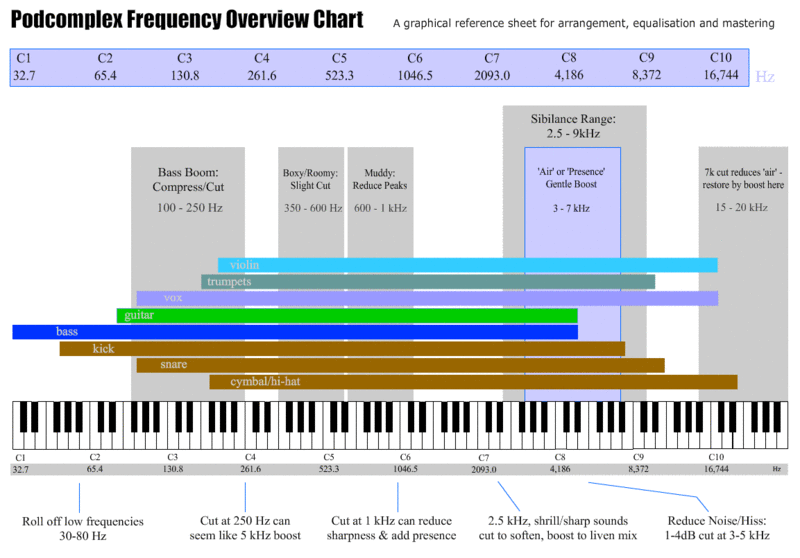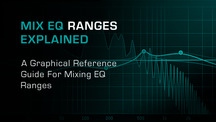Here’s a really usefull chart dealing with the correlation of notes and frequencies. This was created with the intention of providing a visual guide to the frequency ranges occupied by several popular instruments, as well as a few cogent tips that may help with the tweaking of an overall mix…

Mastering Frequency Ranges
It would be a futile exercise to attempt to cram an entire guide to frequency and mastering into a single slide, but I did it anyway. Well, not exactly – but as an introduction to the concept of how frequency ranges, instruments and notes are related, this chart may be of some value. As you can see, it’s quite busy; I’ve created a super-long piano keyboard that covers the standard audio recording frequency spectrum. On a DAW controller, it is a trivial matter to transpose the keyboard up or down, so playing notes in the C9 and C10 octaves is actually possible (unlike a traditional piano).
Putting Instruments In Their Place
I have assigned coloured bars to a selection of instruments; the length and position of these bars relative to the keyboard indicates the frequency range that they occupy. The percussion elements all have the same colour, as they are in one sense part of the same instrument (drums). However, as is evident from the chart, the different components of a rhythm section occupy very different frequency ranges. This is why it’s important to give each percussion element a separate channel within a mix; the kick drum will require very different treatment to the hi-hat.
Very Broad EQ Tips
The columns rising up from the keyboard indicate frequency ranges where common problems may occur, and a suggestion of how to remedy them. Of course, these are extremely general points, and for any given recording it may well be the case that none apply. At the bottom of the chart there are a few general tips targeted at smoothing out a final mix, or even a master. Again, the usefulness of these will depend on the source material, and the skill of the engineer in applying them. However, it is a simple introduction to the sort of processes that may be required to create a recording of acceptable quality. If you haven’t seen it already, you might want to also refer to my previous chart on keyboard note frequencies. Another useful resource is IRN’s frequency guide page, which also shows the ranges of various instruments in terms of notes and frequency. Although it’s very dense and quite intimidating at first glance, there is a good deal of useful information in there, so it’s well worth checking out.
Original source from here.









